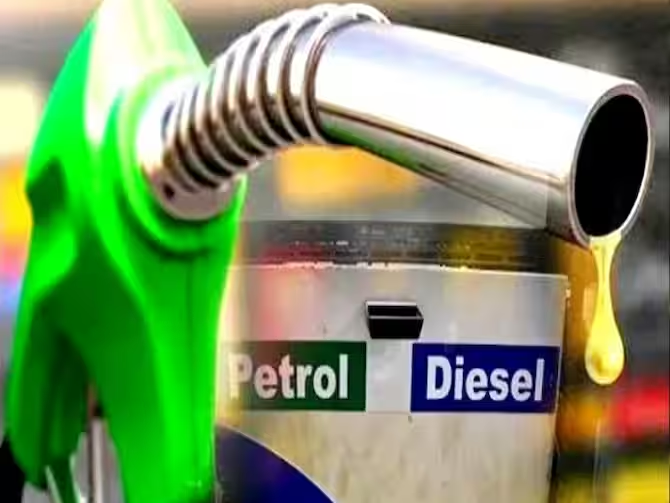Introduction
In the bustling state of Haryana, 2024 has brought about a seismic event that has left motorists and residents alike in a state of disarray - the Haryana Petrol Pump Strike. As fuel stations stand idle and queues lengthen at the few operational pumps, the impact of this strike reverberates across the region. In this article, we delve into the intricacies surrounding the Haryana petrol pump strike, exploring the reasons behind it, the implications for the public, and the efforts being made to resolve this critical issue.
The Genesis of the Haryana Petrol Pump Strike
At the heart of the Haryana petrol pump strike lies a complex interplay of factors that have culminated in a standoff between petrol pump owners and relevant authorities. The primary bone of contention revolves around long-standing demands for better profit margins and improved working conditions for petrol pump owners. The dissatisfaction has festered over the years, eventually reaching a tipping point in 2024, resulting in the widespread Haryana petrol pump strike that has left citizens grappling with fuel shortages.
Impact on Commuters
For the average commuter, the Haryana petrol pump strike translates into more than just inconvenience – it's a disruption to daily life. With fuel stations shutting their doors, long queues snake around the few operational pumps, causing delays and frustration. The strike has not only affected individual motorists but has also created challenges for businesses relying on a smooth flow of transportation. From taxi drivers to logistics companies, the repercussions of the Haryana petrol pump strike are felt by all.
Economic Ramifications
Beyond the immediate inconveniences faced by commuters, the Haryana petrol pump strike casts a shadow over the state's economic landscape. Industries dependent on a seamless supply chain are grappling with disruptions, leading to potential losses. The ripple effect extends to various sectors, impacting productivity and hindering the overall economic growth of Haryana. As negotiations continue between petrol pump owners and authorities, the economic fallout remains a pressing concern for both parties involved.
Public Sentiment and Solidarity
In the midst of the chaos, public sentiment plays a pivotal role in shaping the narrative of the Haryana petrol pump strike. Citizens, grappling with fuel shortages and increased commuting times, are expressing their frustrations on social media platforms. However, amidst the discontent, a sense of solidarity is emerging. Many are empathising with the demands of the petrol pump owners, acknowledging the challenges they face and the need for a resolution that benefits both parties.
Negotiations and Government Response
As the Haryana petrol pump strike unfolds, negotiations between the petrol pump owners and the government take centre stage. Authorities are under increasing pressure to find a resolution that addresses the concerns of petrol pump owners while ensuring minimal disruption to the public. The government's response, including potential policy changes and financial considerations, will likely shape the trajectory of the Haryana petrol pump strike and determine its duration and impact on the region.
Alternative Solutions and Contingency Plans
With each passing day of the Haryana petrol pump strike, the need for alternative solutions and contingency plans becomes more apparent. Efforts are being made to explore temporary measures, such as importing fuel from neighbouring states and mobilising emergency services to manage the crisis. The success of these initiatives remains uncertain, underscoring the urgency of a comprehensive resolution to end the Haryana petrol pump strike and restore normalcy to the lives of the residents.
Community Initiatives and Support
In times of crisis, communities often come together to support one another. The Haryana petrol pump strike has prompted the emergence of community-driven initiatives aimed at mitigating the impact on vulnerable populations. From carpooling arrangements to the distribution of essential goods, these grassroots efforts showcase the resilience and solidarity of the people affected by the strike.
The Path Forward: Finding Common Ground
As Haryana grapples with the far-reaching consequences of the petrol pump strike, a crucial question emerges – what is the path forward? The resolution lies in finding common ground, where the demands of petrol pump owners are addressed without compromising the well-being and convenience of the general public. A balanced approach, driven by open dialogue and a commitment to resolving the underlying issues, holds the key to bringing an end to the Haryana petrol pump strike and restoring normalcy to the region.
Conclusion
The Haryana petrol pump strike of 2024 stands as a stark reminder of the intricate balance between the interests of business owners, the responsibilities of the government, and the everyday lives of the public. As negotiations continue and efforts are made to find a resolution, the impact of the strike on commuters, businesses, and the economy remains palpable. The collective hope is that a swift and amicable resolution is reached, allowing Haryana to emerge from this challenging period stronger and more resilient.









No comments:
Post a Comment